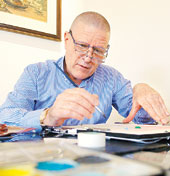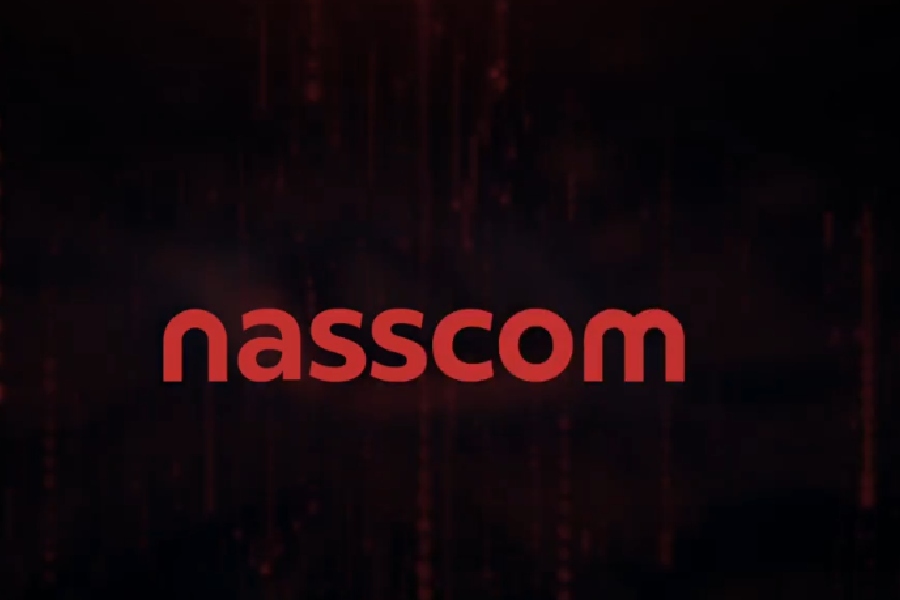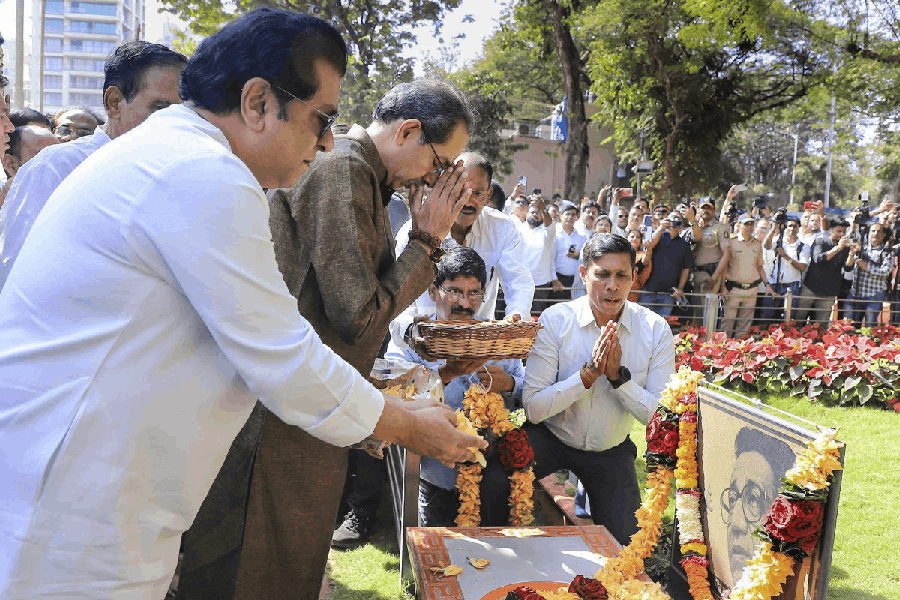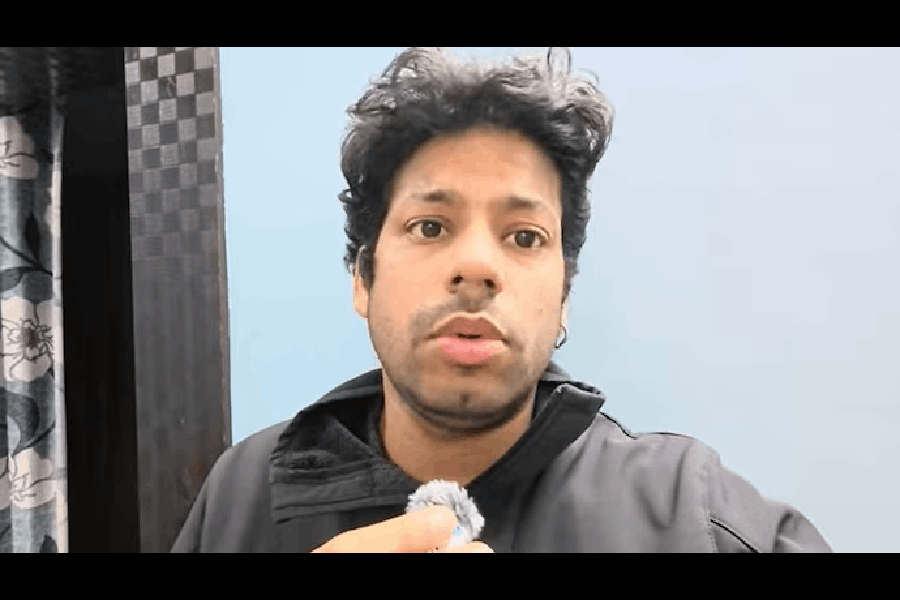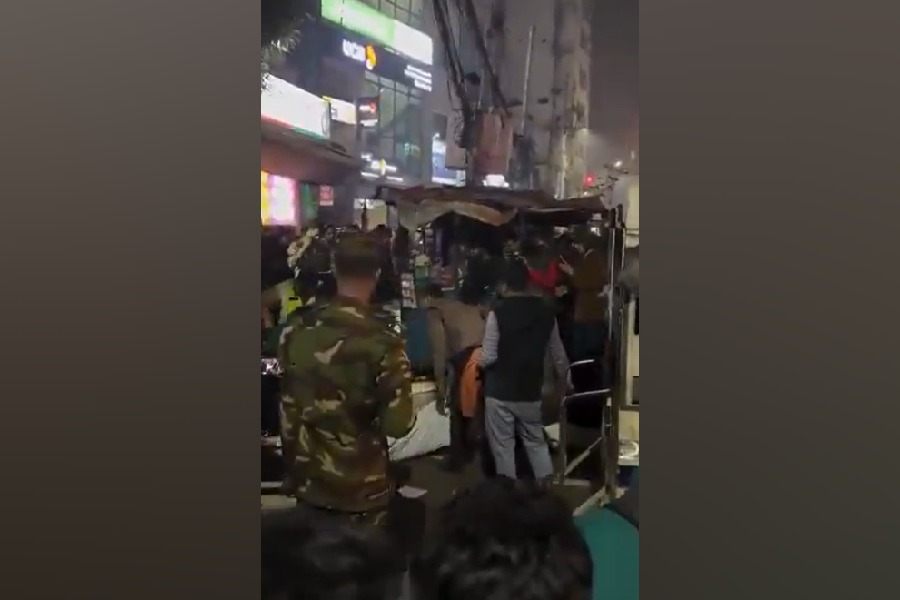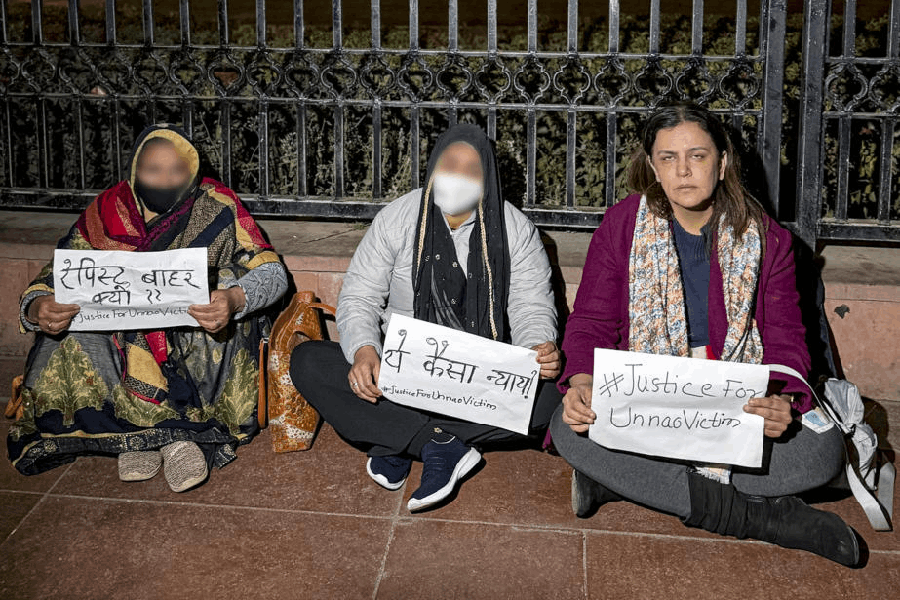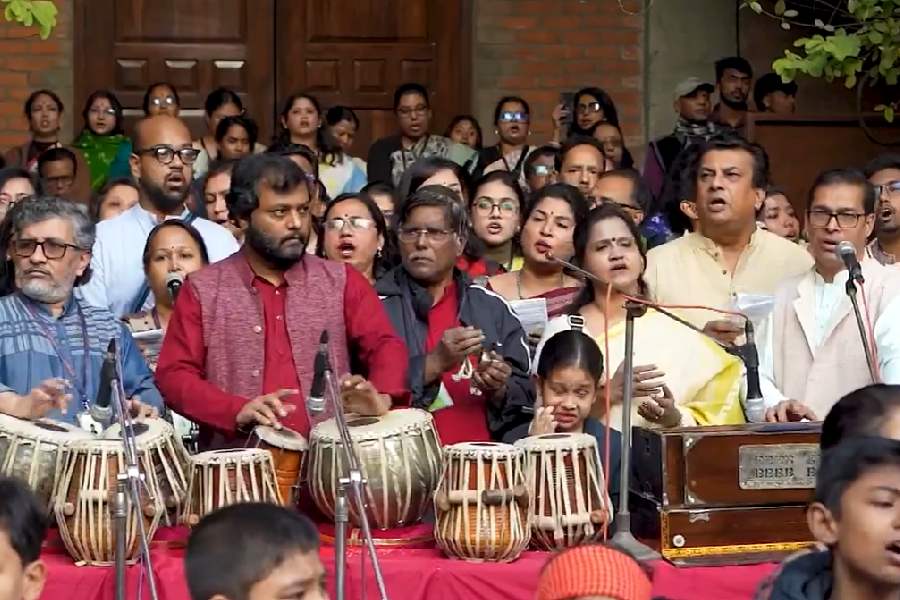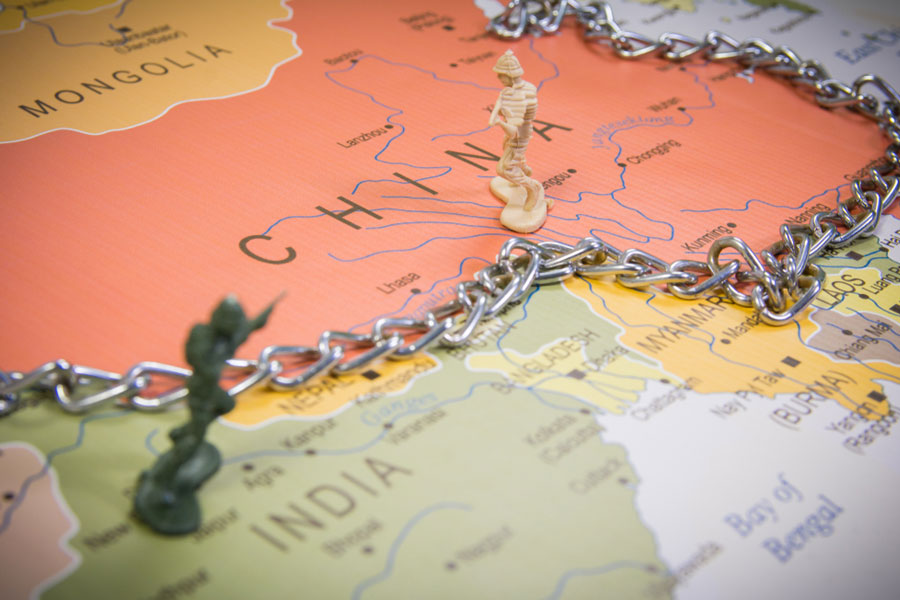 |
| THREE-IN-ONE: Olaf Van Cleef of Cartier in his three-tier eyeglasses and his brush on Tuesday in his Taj Bengal suite. (Bishwarup Dutta) |
When you observe a minuscule rectangle of paper not more than a few square millimetres in size through three sets of eyeglasses — one behind the other — and cautiously apply brush strokes, or paste turquoise, chalcedony or Swarovski crystals on its surface, the microcosm becomes “like an empire”. One can almost visualise Olaf Van Cleef, haute jewellery counsellor at Cartier, at his daily nocturnal exercise as he painstakingly creates an image of a Hindu deity in his Paris flat, when he goes through the same motions on Tuesday in the presidential suite of Taj Bengal, where he sojourns every winter.
Van Cleef has been painting in dainty pastel shades Hindu deities that look as if Raja Ravi Varma had collaborated with Aubrey Beardsley to create them, which have been snapped up by his Indian admirers in the pre-Diwali season, for years. This October 5, 6, and 7 he will hold a show in this very suite itself. He will exhibit 25 paintings. He will show in Sao Paulo next year. But marketing whiz that he is, he declares in a ceaseless pitch — a torrent of words that could be termed as Gallic Anglais — that now in the new globalised world he does not paint for Indians alone.
From the former miniatures, the format of his paintings has become expansive. “Earlier there were too many details,” he says, as a prelude to displaying his new creations. There are “shock details” instead, now for the emerging markets in Brazil and China, where, unlike in his native, conservative France, buyers don’t put their back up when they see a bedizened blue god sporting necklaces that reach his navel. “He (the art lover of the brave new world) is not afraid to buy gods. Brazil is open. China even more. These are the countries of tomorrow,” says Van Cleef.
In an aside he says that when the Chinese visit the Cartier shop in Paris, lacking either English or French, they are armed with pictures of their object of desire. There are 40 Cartier shops in China (none in India yet), but there prices are double. Van Cleef tries to add the third dimension to the flat surface of his paintings by studding them with bigger gemstones, paste (often used on Russian icons) and squares of chocolate paper.
“In Russia today, people gift icons to friends who are getting married or buy a flat. Here they buy my gods during Diwali.”
So now huge dragonflies and butterflies flutter around a turbaned young Indian prince wearing a stunning necklace of many strands. A giant parrot sits on a cornucopia of tropical fruits and flowers, while a woman in an Inigo Jones-style headdress with peacock plumes growing out of them hovers in the background. Pan or perhaps the shepherd Daphnis — yes, this is Greek mythology — plays on pan pipes, as cockatoos, pelicans and parrots dance around him.
 |
| A parrot amidst a riot of fruits and flowers and a lady in peacock plumes hat as conceived by Olaf Van Cleef. (Bishwarup Dutta) |
For the man from Brazil, Van Cleef has added visible music to Krishna. The melody of the flute hangs like a cloud above the deity. He calls it the “Music of the Rose”.
Van Cleef has to be careful about choosing the gemstones for the gods. Sapphire is out as Indians consider it inauspicious. But he has pasted one discreetly on the peacock plumes of Krishna’s crown.
In another aside Van Cleef says in 1992 he had held a press conference in Mumbai, where he displayed some classic Cartier designs. “But one of the prospective Indian customers said his wife was a vegetarian. So he could not buy a tiger. Another said the bamboo pattern reminded him of the poor man’s home, and a third declared that sapphire brings bad luck. So why not a necklace with the Eiffel Tower?”

